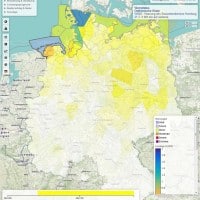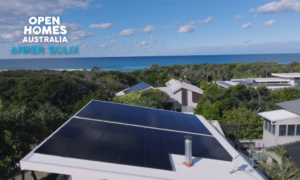One of the biggest challenges to integrating more renewable energy into electricity grids is finding ways to better predict power supplies from weather-dependent sources such as solar and wind power.
In Germany, where the goal is to reach an 80 percent share of renewables by 2050, this challenge is being tackled head-on through a collaboration between the Fraunhofer Institute and the German National Meteorological Service (DWD).
The EWeLiNE project provides Germany’s transmission system operators (TSO) with vastly improved wind and solar PV forecast models and optimised weather predictions, designed to show how much electricity Germany’s installed photovoltaic systems and wind farms will produce over coming hours and days.
“It’s crucial for us to interconnect both worlds – forecasts of weather and power – more closely than before, tailoring them better to the requirements of the transmission system operators,” says project manager Dr Malte Siefert of the Fraunhofer Institute for Wind Energy and Energy System Technology (IWES).
Renewable energy already accounts for 22 percent of Germany’s electricity supply, and the national government energy plan calls for an increase to 35 percent by 2020. As renewable capacity increases, so does the risk of power outages as transmission system operators juggle the supply of variable power sources and constant demand from consumers, as noted by TSO Amprion’s Anja Bergmann-Dick.
“To further expand wind energy and photovoltaics, we will need even more precise power forecasting and adapted weather forecasting.”
The two organisations have launched a demonstration platform called EnergyForecaster, to allow grid operators to test the new forecast tools live in their control centres. The platform includes IWES models designed to improve the forecasts of all 1.9 million PV systems and wind farms in Germany.
The platform will help TSOs predict exactly how much wind and solar energy will be fed, in quarter-hourly segments, into grid nodes, along with the reliability of supply.
“It’s important to forecast how much renewable power will be generated, because that tells us how much conventional generation capacity – whether nuclear, gas, or coal – needs to be brought online. At the same time, the forecast is necessary for calculations to keep the power grid stable and for trading electricity,” says Siefert.
On the weather forecasting side, the DWD has adapted its models to include the intricacies of predicting renewable power outputs.
“We performed detailed meteorological analyses of the occasions when forecasts of power feed-ins to the grid proved most inaccurate. From these analyses we then derived improvements to our weather models,” explains the DWD’s Dr Renate Hagedorn. “With the systematic adaptation of our weather forecasts as a basis for wind and photovoltaic power forecasts for the electric grid, the German weather service has taken on a new and supplementary role.”














































